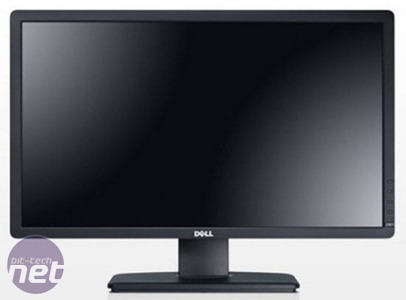16:10 vs 16:9 - the monitor aspect ratio conundrum
October 22, 2012 | 09:05

I've been lucky enough in the last couple of months to have three of the latest IPS monitors sitting on my desk for weeks at a time. They range from several 23in 1,920 x 1,080 models to a 27in screen of the same resolution - all 16:9 aspect ratios of course. However, key to the point of this article is the middle man - a 24in monitor with a resolution of 1,920 x 1,200 - an aspect ratio of 16:10.
[break]
If you're familiar with aspect ratios, you'll probably know about the fact that in the last four or so years, monitors have switched from being predominately 16:10 (typically 1,680 x 1,050 or 1,920 x 1,200) to 16:9 (usually 1,600 x 900 or 1,920 x 1,080). This is to cut production costs by tying them in with flatscreen TV manufacturing which also sports a 16:9 aspect ratio. As you can see from the above resolutions, you lose a considerable amount of vertical screen real-estate with 16:9 compared to 16:10.
This has real knock-on effects when it comes to viewing photos or webpages, the latter requiring a lot more scrolling for example, while you end up with a narrower field of vision in games too. These are disadvantages that enthusiasts have been crowing about for some time, but having used a larger 27in 16:9 monitor, compared to the seemingly much smaller 24in 16:10 for a few weeks and just having switched back, do you know what I realised?
Even with an extra three inches of diagonal screen space (24in vs 27in) the 27in monitor simply didn't feel as big. Admittedly it was nice to get rid of the horizontal black lines when watching 1080p movies, but apart from this, even having gotten used to the extra size (which was quite immersive in games it has to be said) I still pined to switch back to the 24in screen.
This was in addition to the loss of sharpness due to the fact that fewer pixels had been spread over a larger area, making the screen feel at an even greater disadvantage. Strangely I didn’t expect it to be inferior. The extra screen space seemed like a valuable thing to have, and games certainly appeared much larger. However, when you think about it, all you’re doing is enlarging the image, rather than actually seeing more compared to an identical resolution on a smaller 23in screen.
I have to admit I’ve been on the fence in this argument till now. After all, 16:10 monitors are usually far more expensive too. However, having seen that even a 27in 16:9 monitor can’t usurp a 24in 16:10 example sporting all those extra vertical pixels, it really did make me by surprise and I’d have no qualms now recommending a 24in 16:10 monitor over a larger one that can only offer 1080p.
As 27in monitors become cheaper (the model I looked at costs a similar price to the 24in 16:10 model I’d also been using), the question is a popular one in enthusiast forums - 27in 16:9 or 24in 16:10? While I believe the sweet spot for large monitors is in the 27inch range (I find they’re not too big as to make you constantly move your head around as you would with a 30in monitor on your desk, but offer substantial gains over 24in models) this would have to be with one sporting a 16:10 aspect ratio. As for the above question, my mind is certainly made up – I’d recommend the 24in 16:10 option every time.
What are your thoughts on aspect ratios? Do you have no qualms with 16:9 or are you a die hard 16:10 fan? Let us know in the forum.
[break]
If you're familiar with aspect ratios, you'll probably know about the fact that in the last four or so years, monitors have switched from being predominately 16:10 (typically 1,680 x 1,050 or 1,920 x 1,200) to 16:9 (usually 1,600 x 900 or 1,920 x 1,080). This is to cut production costs by tying them in with flatscreen TV manufacturing which also sports a 16:9 aspect ratio. As you can see from the above resolutions, you lose a considerable amount of vertical screen real-estate with 16:9 compared to 16:10.
This has real knock-on effects when it comes to viewing photos or webpages, the latter requiring a lot more scrolling for example, while you end up with a narrower field of vision in games too. These are disadvantages that enthusiasts have been crowing about for some time, but having used a larger 27in 16:9 monitor, compared to the seemingly much smaller 24in 16:10 for a few weeks and just having switched back, do you know what I realised?
Click to enlarge - a 24in 16:10 monitor offers far more vertical screen space than a 16:9 monitor without losing horizontal resolution
Even with an extra three inches of diagonal screen space (24in vs 27in) the 27in monitor simply didn't feel as big. Admittedly it was nice to get rid of the horizontal black lines when watching 1080p movies, but apart from this, even having gotten used to the extra size (which was quite immersive in games it has to be said) I still pined to switch back to the 24in screen.
This was in addition to the loss of sharpness due to the fact that fewer pixels had been spread over a larger area, making the screen feel at an even greater disadvantage. Strangely I didn’t expect it to be inferior. The extra screen space seemed like a valuable thing to have, and games certainly appeared much larger. However, when you think about it, all you’re doing is enlarging the image, rather than actually seeing more compared to an identical resolution on a smaller 23in screen.
I have to admit I’ve been on the fence in this argument till now. After all, 16:10 monitors are usually far more expensive too. However, having seen that even a 27in 16:9 monitor can’t usurp a 24in 16:10 example sporting all those extra vertical pixels, it really did make me by surprise and I’d have no qualms now recommending a 24in 16:10 monitor over a larger one that can only offer 1080p.
Click to enlarge - a 16:9 monitor is better for viewing movies but the reduced vertical space can be a bitter pill to swallow
As 27in monitors become cheaper (the model I looked at costs a similar price to the 24in 16:10 model I’d also been using), the question is a popular one in enthusiast forums - 27in 16:9 or 24in 16:10? While I believe the sweet spot for large monitors is in the 27inch range (I find they’re not too big as to make you constantly move your head around as you would with a 30in monitor on your desk, but offer substantial gains over 24in models) this would have to be with one sporting a 16:10 aspect ratio. As for the above question, my mind is certainly made up – I’d recommend the 24in 16:10 option every time.
What are your thoughts on aspect ratios? Do you have no qualms with 16:9 or are you a die hard 16:10 fan? Let us know in the forum.

MSI MPG Velox 100R Chassis Review
October 14 2021 | 15:04







Want to comment? Please log in.